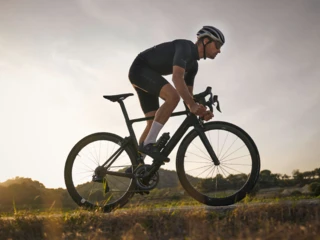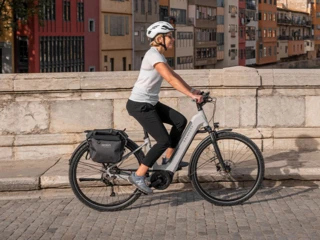What is the ETRTO Table and Why Do I Need It?
Veröffentlicht am
The ETRTO table is a useful tool for determining which tire fits which rim. We explain how it works.

What is the ETRTO Table and Why Do I Need It?
When you need a new tire, there are many things to consider: tire size, tire width, tread pattern, whether you want to use a conventional butyl or a TPU tube, and much more. This wide selection can also be confusing. Fortunately, you can now easily read the size of the tires on the tire sidewall (bicycle tires). This was not always the case.
Before 1964, there was no standardization for tire sizes. Fortunately, the European Tire and Rim Technical Organization (ETRTO) took on the task and paved a path through the jungle of size designations. You can recognize their work on the sidewall of a tire. Next to the inch designation, there is a number on the tire wall, such as 57-622. This is the ETRTO number. The two digits contain important information: the width of the tire – in this case, 57 millimeters – and the inner diameter, here 622 millimeters. For rims, the measurements are given as rim diameter and internal width, i.e., the distance from rim flange to rim flange. A rim with the dimensions 559 x 17 has a diameter of 559 millimeters (equivalent to 26 inches) and an internal width of 17 millimeters.
With these precise measurements, you can now find the perfect tire for your rim. But what exactly does it mean to find the perfectly fitting tire?
One Rim – Different Tire Sizes or Widths?
You can fit tires of different widths on a rim, which significantly affects the riding and braking behavior. Narrower tires offer lower rolling resistance, while wider tires increase control in rough terrain, and so on. This is interesting for almost every type of bicycle, but especially for a gravel or touring bike, as you can adjust the riding characteristics to the terrain you prefer to ride on.
However, there are limits. You cannot simply fit a fat MTB tire on a road bike. And even if the inner and outer diameters of the tires are technically compatible, it does not necessarily make sense to ride extreme combinations. For example, a very wide tire on a very narrow rim quickly leads to a spongy ride, which puts a lot of strain on the tire sidewalls and can even cause falls in sharp turns.
The ETRTO Table – Which Bicycle Tube Fits Which Rim Size
Which tube is suitable for which rim? To answer this question, you can look at the ETRTO table:
| Rim Internal Width in mm | ||||||||||||||||||||
|---|---|---|---|---|---|---|---|---|---|---|---|---|---|---|---|---|---|---|---|---|
| Tire Width | 15 | 16 | 17 | 18-20 | 21-22 | 23 | 24 | 25 | 26-27 | 28-30 | 31-35 | 36-40 | 41-43 | 44-53 | 54-58 | 59-64 | 65-71 | 72-89 | 90-100 | |
| from (mm) | to (mm) | |||||||||||||||||||
| 20 | 21 | • | • | • | ||||||||||||||||
| 22 | 24 | • | • | • | • | |||||||||||||||
| 25 | 27 | • | • | • | • | • | ||||||||||||||
| 28 | 28 | • | • | • | • | • | ||||||||||||||
| 29 | 34 | • | • | • | • | • | • | • | ||||||||||||
| 35 | 46 | • | • | • | • | • | • | • | ||||||||||||
| 47 | 57 | • | • | • | • | • | • | • | • | |||||||||||
| 58 | 65 | • | • | • | • | • | • | • | ||||||||||||
| 66 | 71 | • | • | • | • | • | • | |||||||||||||
| 72 | 83 | • | • | • | • | |||||||||||||||
| 84 | 95 | • | • | • | • | |||||||||||||||
| 96 | 113 | • | • | • | ||||||||||||||||
| 114 | 132 | • | • | |||||||||||||||||
On the X-axis, you find the internal width in millimeters, and on the Y-axis, the tire width, i.e., the first number of the ETRTO digits on your tire sidewalls. The list applies to all tire sizes, from children's bicycle tires to fat tires. The dot marks the compatible combinations. You see, the determination is quite simple.
The Right Tube is Crucial
No matter what tire size you ride, you should always make sure you install the right tube. An incorrect tube leads to poor riding characteristics and increased risk of punctures.
AERON/TPU tubes are more durable and stable than conventional butyl tubes and work well in any tire size. The higher shape stability is a big plus, especially in larger tire sizes, as it prevents blistering.
The small packed size, improved rolling resistance, and increased puncture protection are an advantage for any bike, whether you ride a mountain bike, road bike, CX/gravel bike, or city and touring bike.
Now you know everything about the ETRTO table, how to use it, and what benefits you can gain from it.



